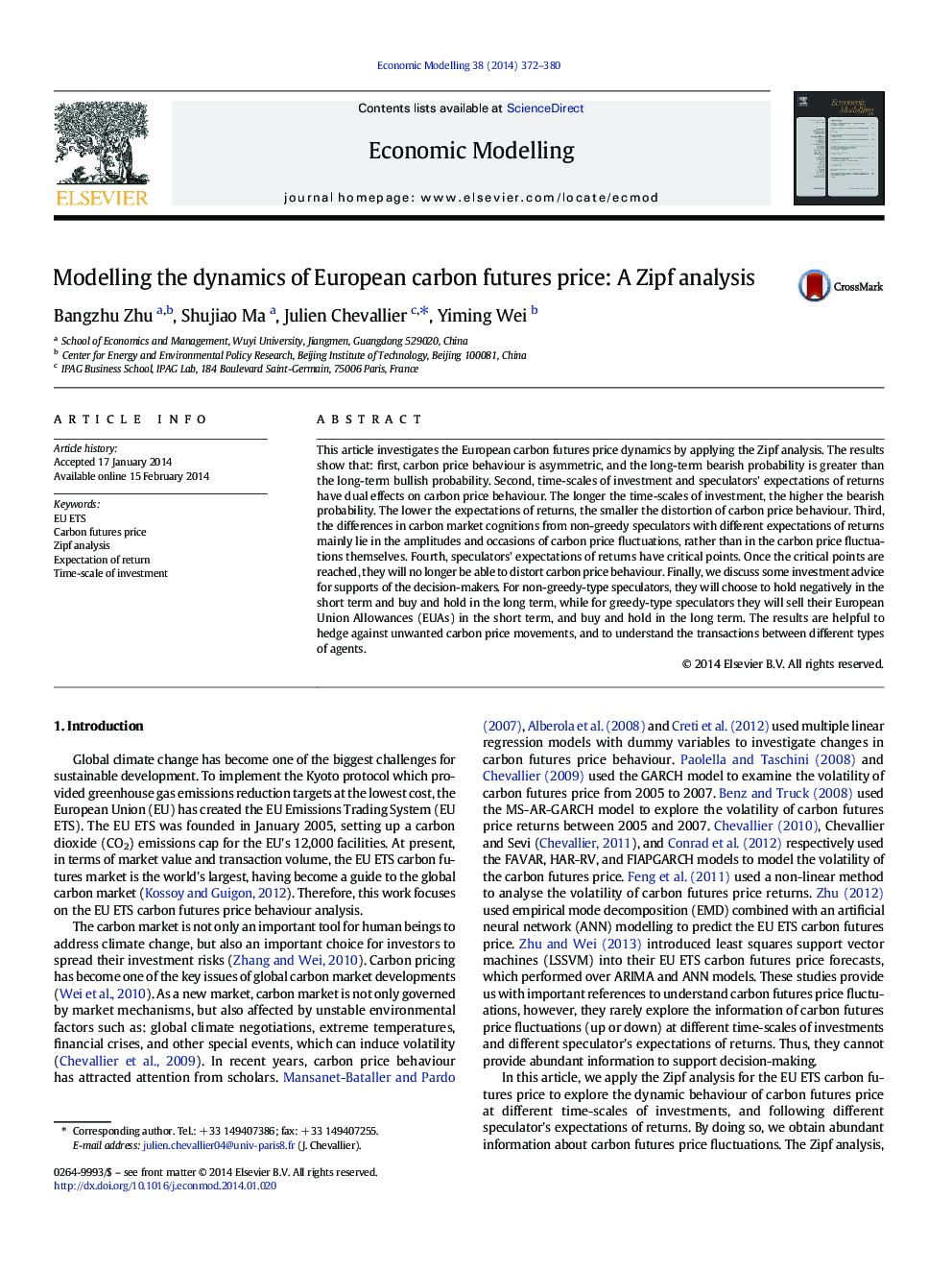| Article ID | Journal | Published Year | Pages | File Type |
|---|---|---|---|---|
| 5054387 | Economic Modelling | 2014 | 9 Pages |
Abstract
This article investigates the European carbon futures price dynamics by applying the Zipf analysis. The results show that: first, carbon price behaviour is asymmetric, and the long-term bearish probability is greater than the long-term bullish probability. Second, time-scales of investment and speculators' expectations of returns have dual effects on carbon price behaviour. The longer the time-scales of investment, the higher the bearish probability. The lower the expectations of returns, the smaller the distortion of carbon price behaviour. Third, the differences in carbon market cognitions from non-greedy speculators with different expectations of returns mainly lie in the amplitudes and occasions of carbon price fluctuations, rather than in the carbon price fluctuations themselves. Fourth, speculators' expectations of returns have critical points. Once the critical points are reached, they will no longer be able to distort carbon price behaviour. Finally, we discuss some investment advice for supports of the decision-makers. For non-greedy-type speculators, they will choose to hold negatively in the short term and buy and hold in the long term, while for greedy-type speculators they will sell their European Union Allowances (EUAs) in the short term, and buy and hold in the long term. The results are helpful to hedge against unwanted carbon price movements, and to understand the transactions between different types of agents.
Keywords
Related Topics
Social Sciences and Humanities
Economics, Econometrics and Finance
Economics and Econometrics
Authors
Bangzhu Zhu, Shujiao Ma, Julien Chevallier, Yiming Wei,
